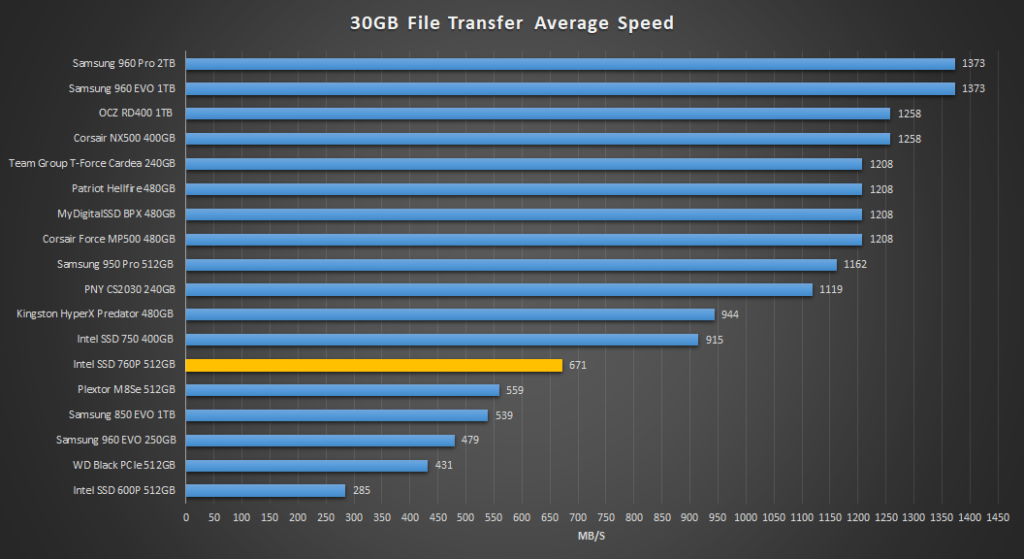REAL WORLD FILE TRANSFER
We also wanted to see how performance was in a real-world use when transferring large files to the SSD. For this test, we are going to simply stress write performance by transferring over a 30GB folder of movies off of a 512GB Samsung 950 Pro to the test SSDs and time how long it takes. Once complete we can calculate the average speed.
The Intel 760P took the 30GB transfer without a sweat. It averaged 671MB/s, which is lower than the rated spec. Thus, we can see that there is indeed an SLC cache working here.
POWER CONSUMPTION
For our power consumption testing, we have the drive connected to the system as a secondary drive. To record the wattage, we are now utilizing a Quarch Technology Programmable Power Module. It allows us to accurately measure power consumption over time and is flexible enough to allow us to test any SSD that comes our way.
Our power analysis may change as time goes on, but for now, we are looking at just a few metrics with the main goal of measuring our results against the manufacturer’s ratings. Because most consumer systems are at idle for about 80% of the time, idle power consumption is an important measure to look at when understanding the efficiency of a drive.
First up we have our results with Active State Power Management disabled. As we can see, the Intel 760P leads the pack here with an average consumption of .8W. This is slightly improved over the 600P, but not half the consumption that Intel states.
In the chart above, with ASPM enabled, we can see that the Intel 760P does in fact consume half the power at idle as the Intel 600P. But, with its result of 225mW, it is still far more than Intel’s rating of 25mW.
POWER EFFICIENCY
Finally, we wanted to post up a graph of the power efficiency of the SSDs in write transfers. We are looking at MB/s per Watt in this graph. The higher the result, the better.
The chart above shows us just how efficient an SSD is in writing data. Here we can see that the Intel 760P averages 153MB/s per watt, this is double what the Intel 600P was able to achieve. However, it is still less efficient than the SATA based Samsung 850 EVO 1TB.
 The SSD Review The Worlds Dedicated SSD Education and Review Resource |
The SSD Review The Worlds Dedicated SSD Education and Review Resource | 


How about the maximum power consumption of the Intel 760p during full throttle writing?
I want to buy an SSD that consumes not so much power and does not overheat, at a decent/medium speed (faster than a SATA though).
I’ve recorded about 5.25-5.5W during a large file copy to itself. Unless you are trasnfering multiple 60-100GB transfers within minutes from one NVMe SSD to another, you wont have overheating issues. Transfering from a SATA drive to an NVMe SSD isn’t going to cause much heat at all. With most drives, you can usually transfer from SATA to NVMe all day without heat issues.